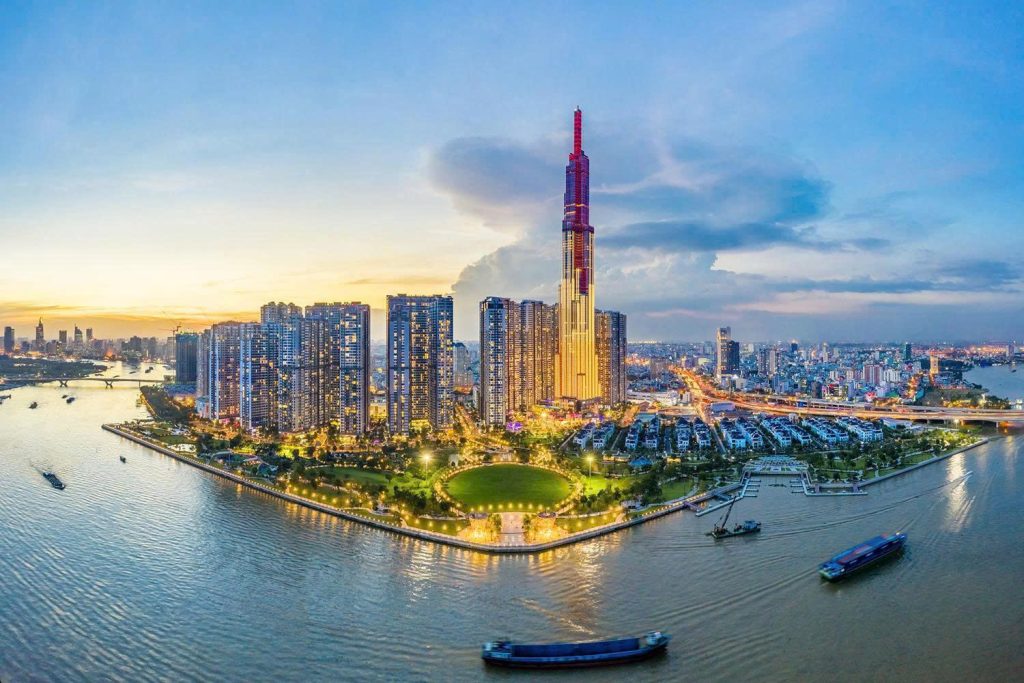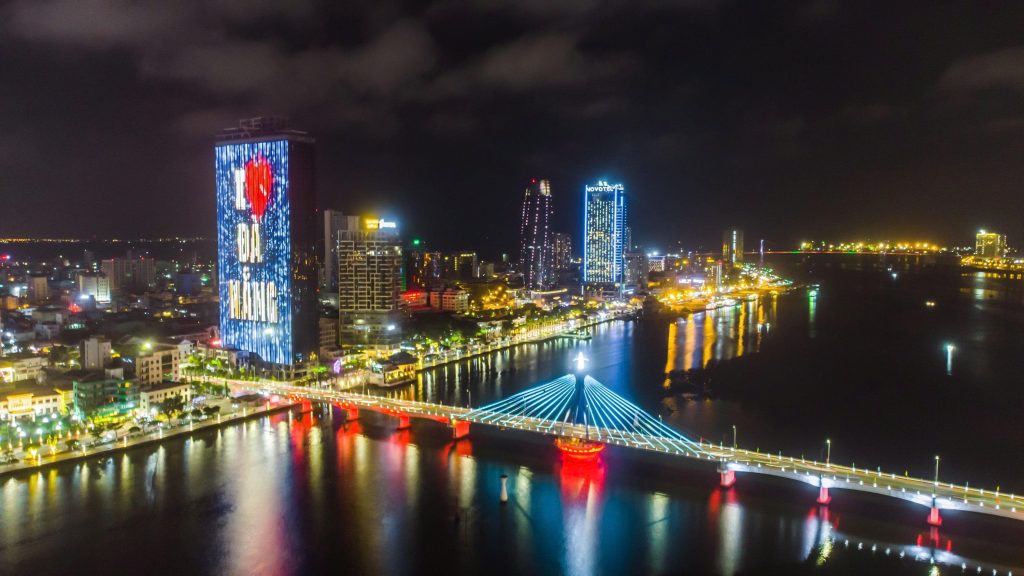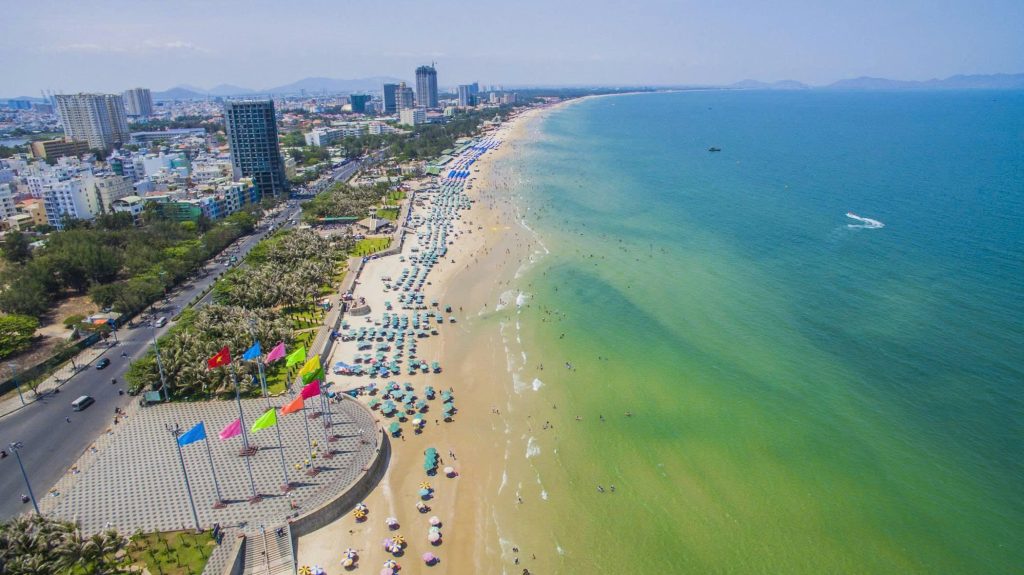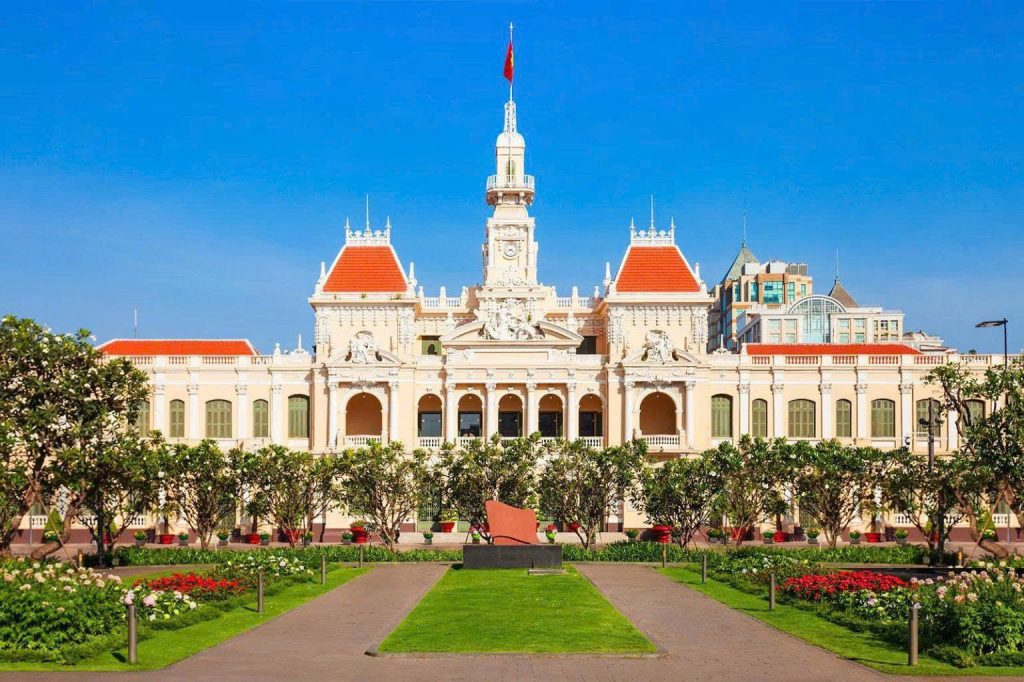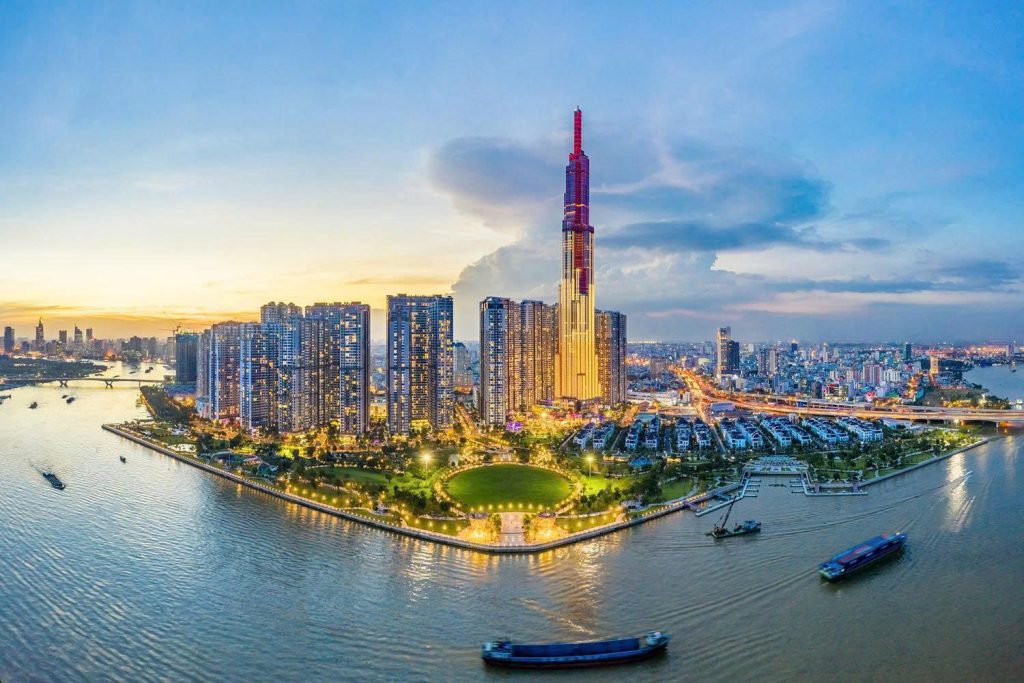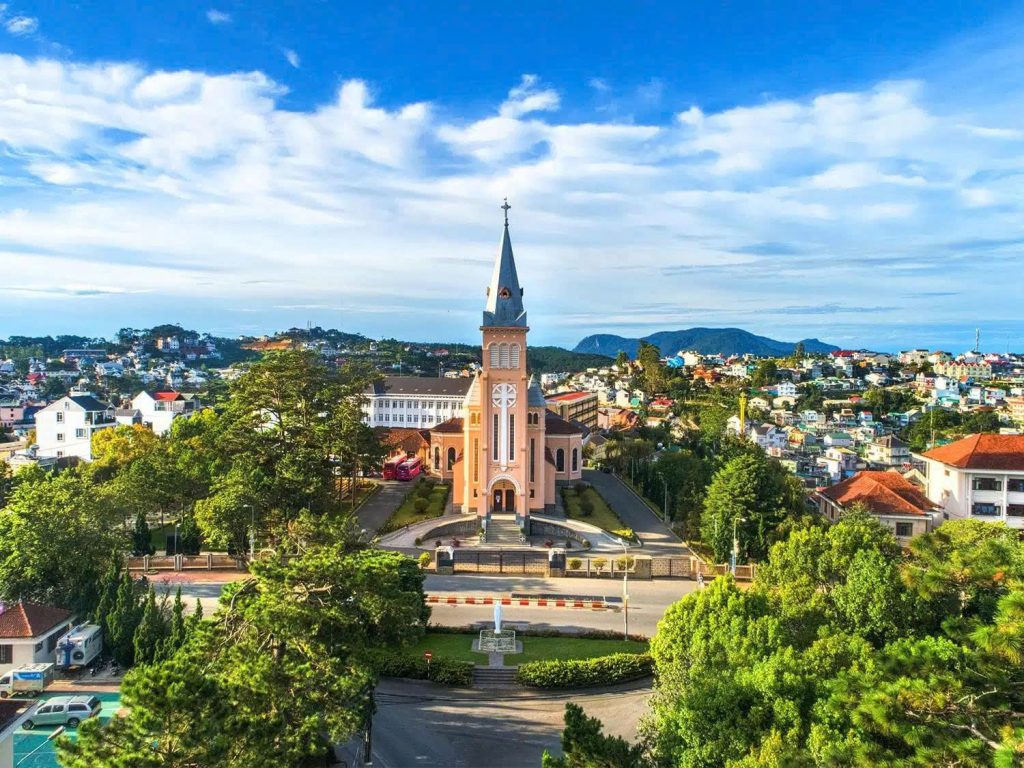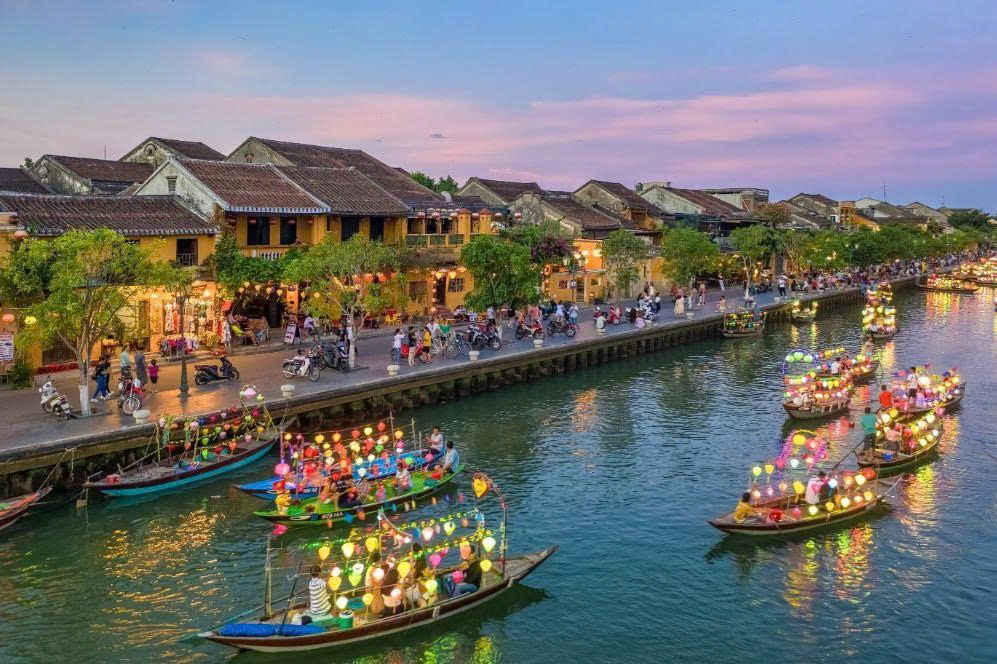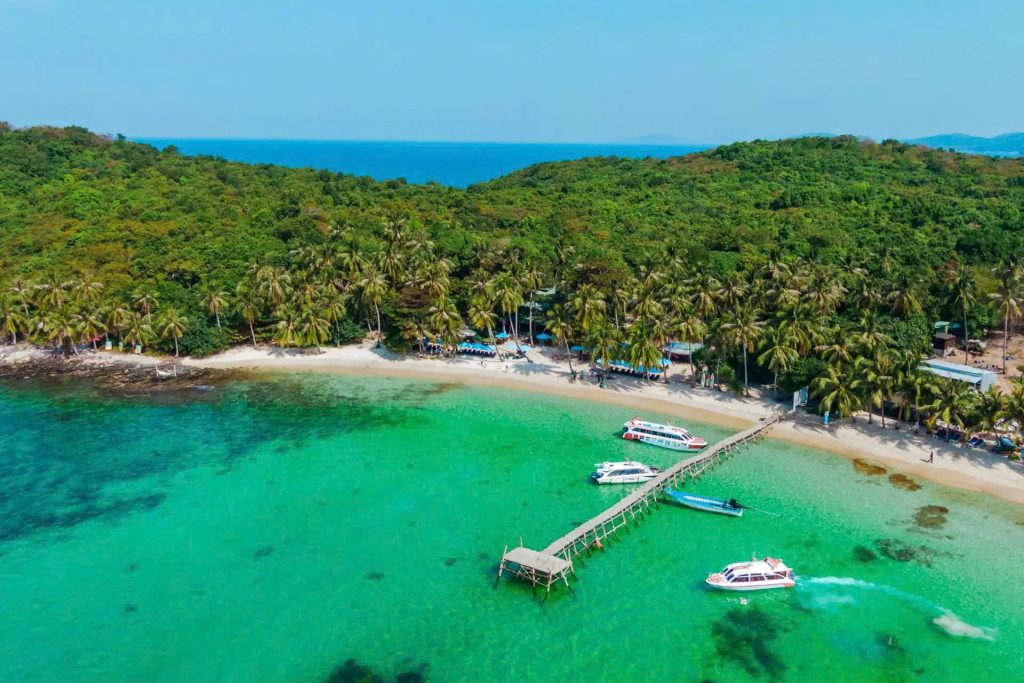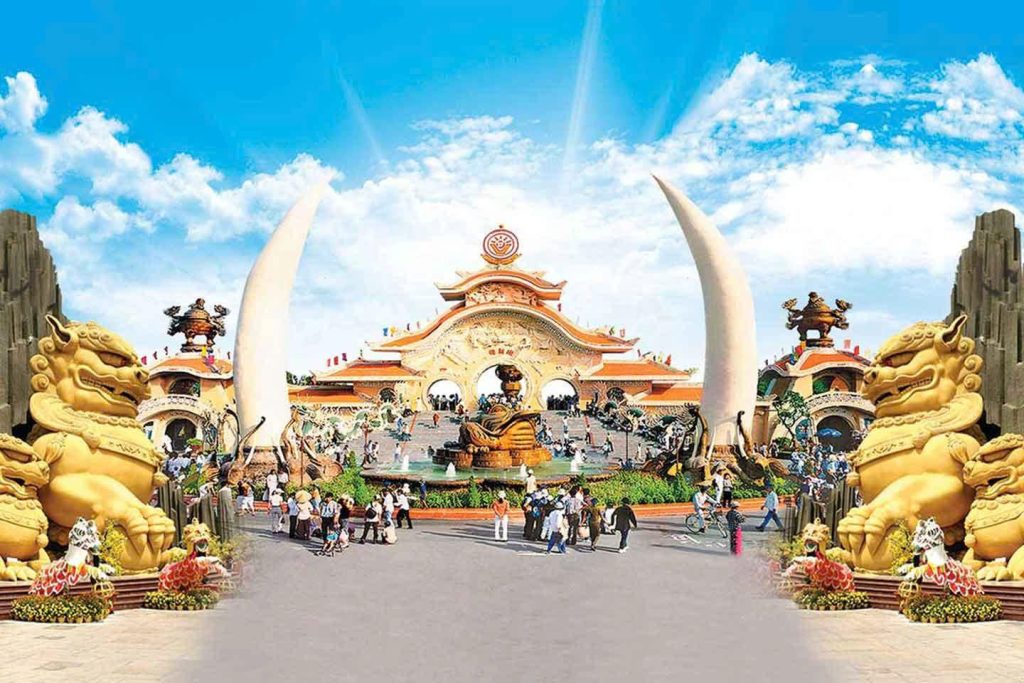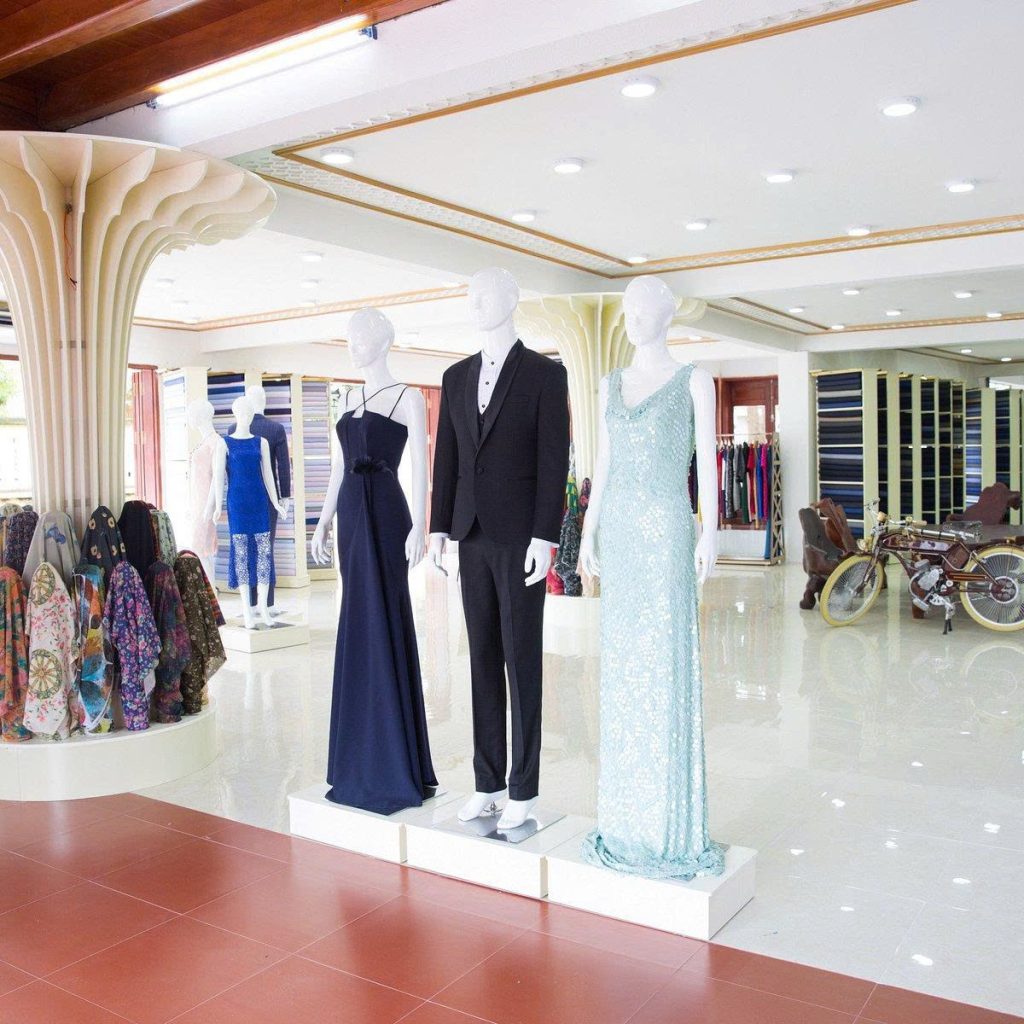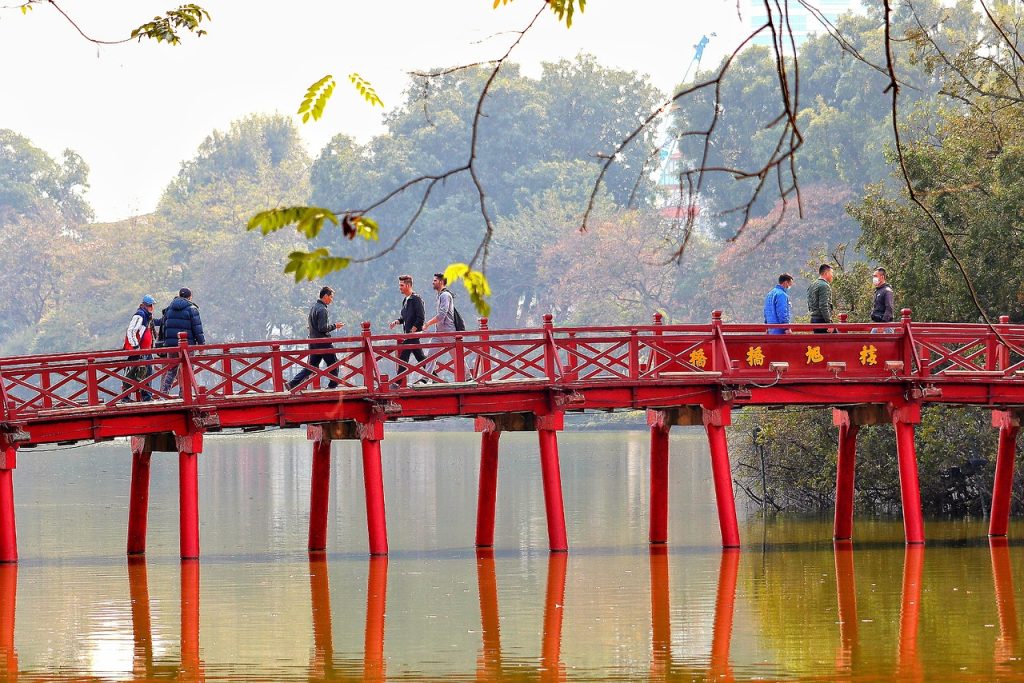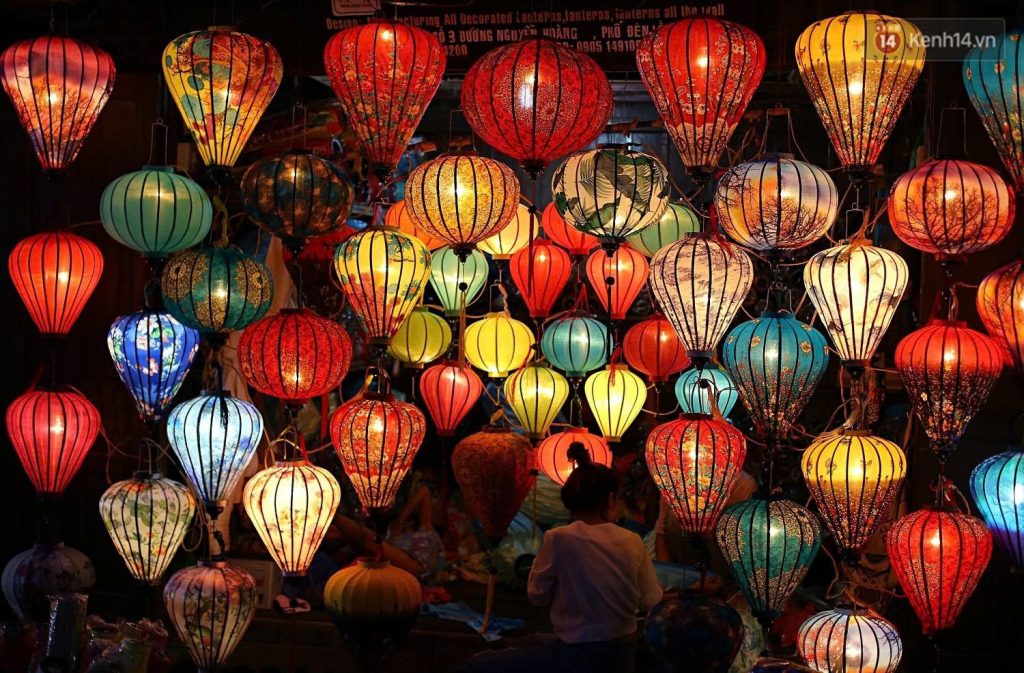The magnetic pull of Ho Chi Minh City (HCMC), still known globally by its poetic and historical name, Saigon, is undeniable. This sprawling Southern metropolis, a vibrant tapestry woven from centuries of colonial influence, wartime resilience, and a relentless pursuit of modernity, serves as the economic and cultural powerhouse of Vietnam.
For the savvy traveler seeking more than just surface-level sightseeing, a comprehensive Ho Chi Minh City Guide is indispensable. This article serves as your ultimate blueprint, meticulously detailing the cultural entities, dissecting the world-renowned street food scene, and illuminating the electric core of its nightlife. By following this guide, you will master the essentials, ensuring your journey is not just a visit, but a profound cultural immersion that aligns with the highest standards of travel expertise.
1. The Dual Identity of Saigon/HCMC
Before diving into the must-sees and must-eats, it is vital to acknowledge the city’s unique dual identity, a crucial first step in any comprehensive Ho Chi Minh City Essentials Guide.
- Ho Chi Minh City (HCMC): This is the official administrative name, formalized in 1976. It is used on all government documents, maps, and formal signage. However, its usage by locals is primarily limited to formal contexts.
- Saigon (Sài Gòn): This beloved historical name pre-dates the French colonial era. For the vast majority of residents, “Saigon” remains the emotional and practical identifier. Using “Saigon” in conversation is not only accepted but often appreciated as it reflects local sentiment.
RELATED: Discovering the Best Time to Visit Ho Chi Minh City
A Deep Dive into District Mapping and Local Vibe
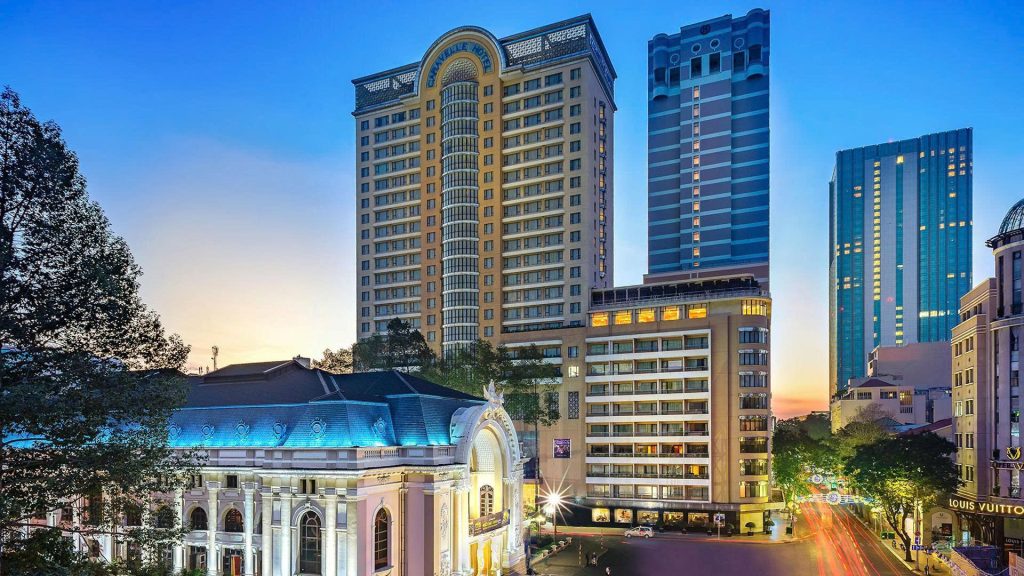
HCMC is composed of 19 urban and 5 rural districts. Understanding the role of the key central districts is key to efficient travel planning.
District 1 (Quận 1): The Tourist Epicenter
- Vibe: Busy, cosmopolitan, and where most of the historical action happens. It serves as the central business district.
- Icons: Reunification Palace, Notre Dame, Ben Thanh Market.
- Accommodation: Features everything from five-star luxury (The Reverie) to high-quality budget hostels.
District 3 (Quận 3): History and Local Charm
- Vibe: A residential extension of District 1, offering a slightly slower pace, beautiful tree-lined avenues, and colonial villas.
- Tips: Perfect for experiencing local café culture and accessing authentic street food without the aggressive crowds of D1.
Chợ Lớn (District 5 & 6): Chinatown and Trade
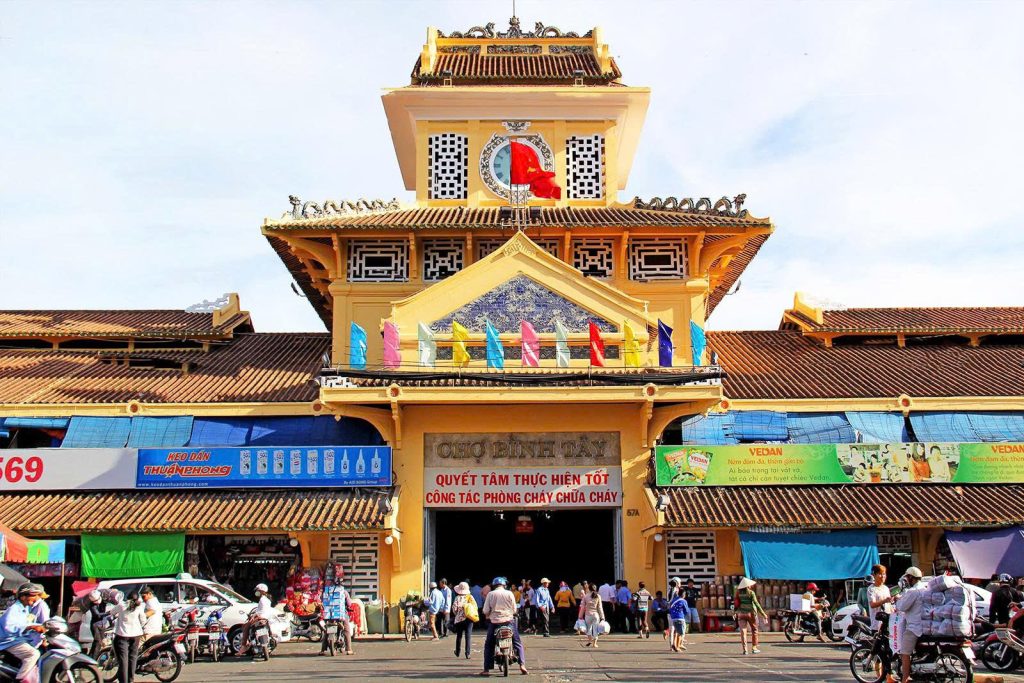
- Vibe: A vibrant hub of Chinese-Vietnamese culture, trade, and traditional architecture.
- Icons: Bình Tây Market and historic pagodas like the Thien Hau Temple. Essential for understanding the city’s rich ethnic diversity.
Thảo Điền (District 2): The Expat Enclave
- Vibe: Modern, trendy, and often referred to as the “expat bubble.” Known for international restaurants, art galleries, and riverside dining.
- Relevance: Offers a tranquil escape from the central chaos, but requires dedicated travel time to reach historical sites.
RELATED: Where to Stay in Ho Chi Minh City for First Time Visitors
2. Culture & History: Tracing Saigon’s Story
The cultural entities of Ho Chi Minh City (Saigon) serve as tangible anchors to its complex and profound past. This segment of the Ho Chi Minh City Essentials Guide provides an in-depth look at the architectural and historical entities that collectively narrate the city’s transition from a colonial jewel to a resilient modern metropolis.
Sites of Conflict and Reconciliation
These powerful landmarks are central to understanding modern Vietnam’s enduring national identity, focusing on the war and its aftermath.
The War Remnants Museum (Bảo tàng Chứng tích Chiến tranh)
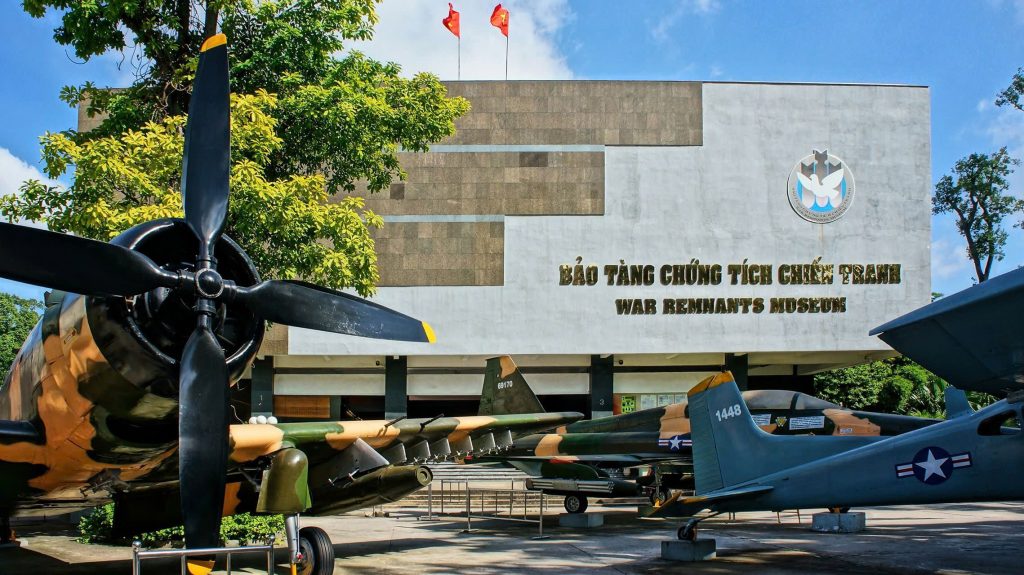
- This museum is arguably the most crucial cultural entity in the city. It presents an unflinching and often graphic view of the Vietnam War (known locally as the American War) from the Vietnamese perspective. The exhibits meticulously detail the devastating impacts of chemical warfare, particularly Agent Orange, and catalogue the widespread civilian atrocities. It is a powerful, politically charged, and necessary experience for any visitor seeking to understand the nation’s history.
- Tip: Go early to avoid large crowds, especially tour groups that arrive mid-morning. Be prepared for a highly emotional experience; the exhibits are stark and unapologetic. Give yourself adequate time (at least two to three hours) for reflection.
RELATED: The War Remnants Museum in Ho Chi Minh City: Visitor’s Guide
Reunification Palace (Di tích lịch sử Dinh Độc Lập)
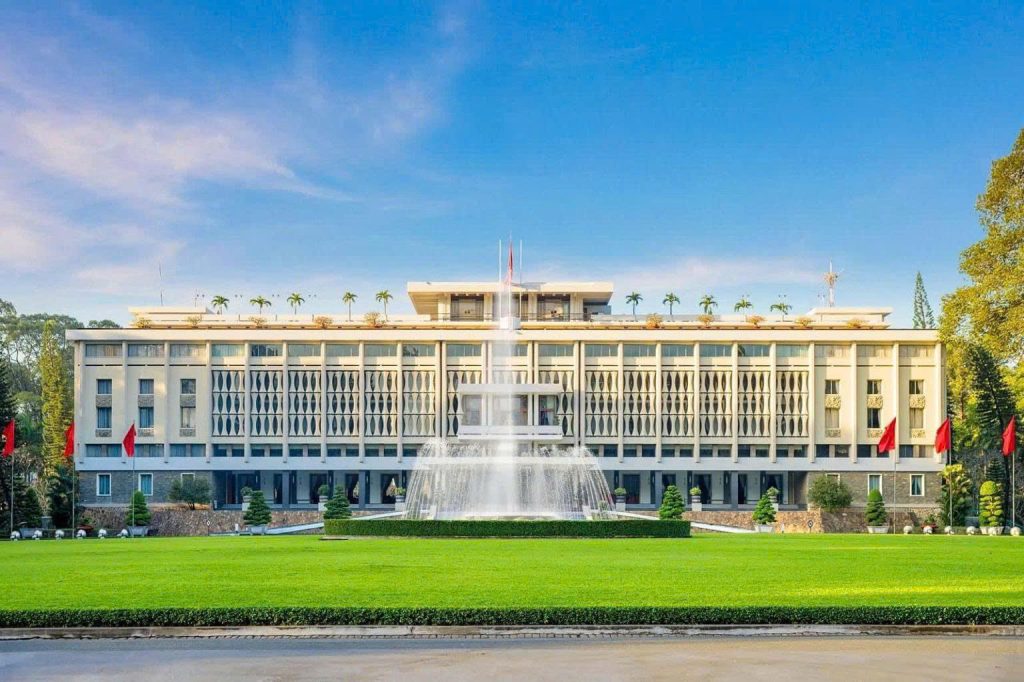
- This is a physical symbol of the war’s conclusion. It served as the former home and workplace of the President of South Vietnam. The site is a pristine time capsule of 1960s architecture and political staging. The palace’s gates were famously breached by a North Vietnamese tank on April 30, 1975, marking the end of the conflict.
- Architectural: Beyond the formal halls, visitors can explore the private living quarters, the cinema room, and the intricate system of lounges and meeting rooms. The most fascinating section is the underground command bunker, complete with preserved period telecommunications equipment and maps, showcasing the intense operational pressure faced during the final years.
RELATED: Independence Palace: Ho Chi Minh City Landmark Guide
Gems of French Colonial Architecture
Saigon’s lasting colonial legacy is best experienced through these beautifully maintained architectural entities, which lend credence to its historical nickname, “The Pearl of the Far East.”
Notre Dame Cathedral Basilica of Saigon and Central Post Office
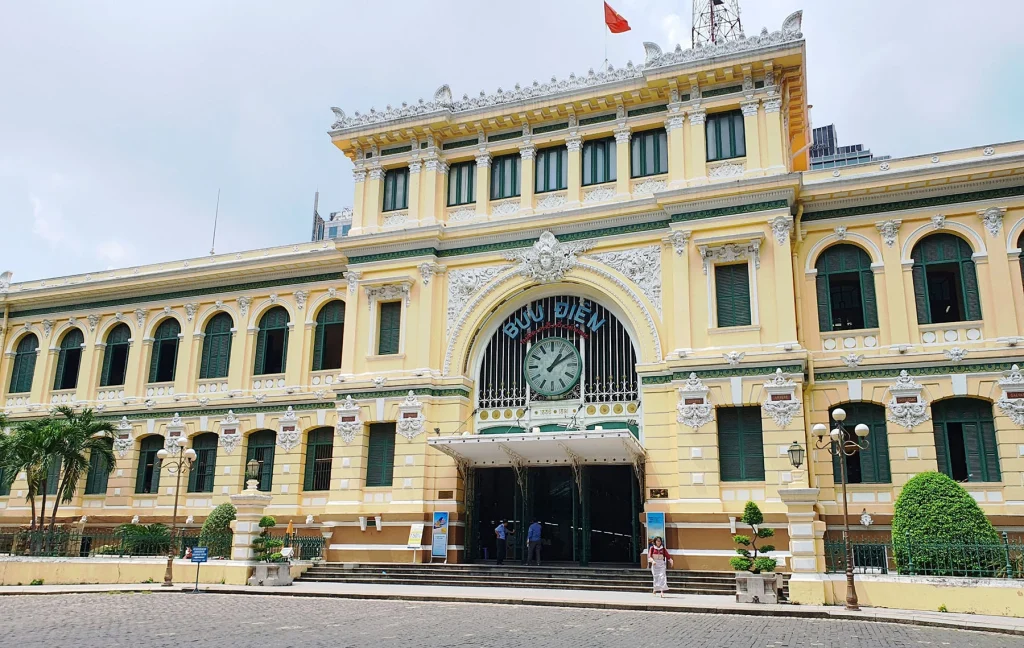
- Notre Dame Cathedral (Enduring Architectural Entity): This magnificent structure, built between 1877 and 1883, is an enduring architectural masterpiece of the Neo-Romanesque style. Its immense scale and striking appearance are partly due to the fact that all building materials, including the red bricks, were originally imported directly from Toulouse, France.
- (Travel Planner Note): The Cathedral has been undergoing extensive, multi-year restoration. While the exterior façade may be partially obscured by scaffolding, it remains a crucial photo stop.
- Central Post Office: Located directly opposite the Cathedral, this grand, sweeping building was designed by the architectural team of Gustave Eiffel (of Eiffel Tower fame). Its vast, arched interior, complete with historical maps painted on the walls and vintage phone booths, is remarkable. It remains a fully functioning post office, making it a perfect spot to send a postcard home—a tangible souvenir of colonial-era utility.
RELATED: Complete Guide to the Saigon Central Post Office: A Timeless Icon
Saigon Opera House and City Hall
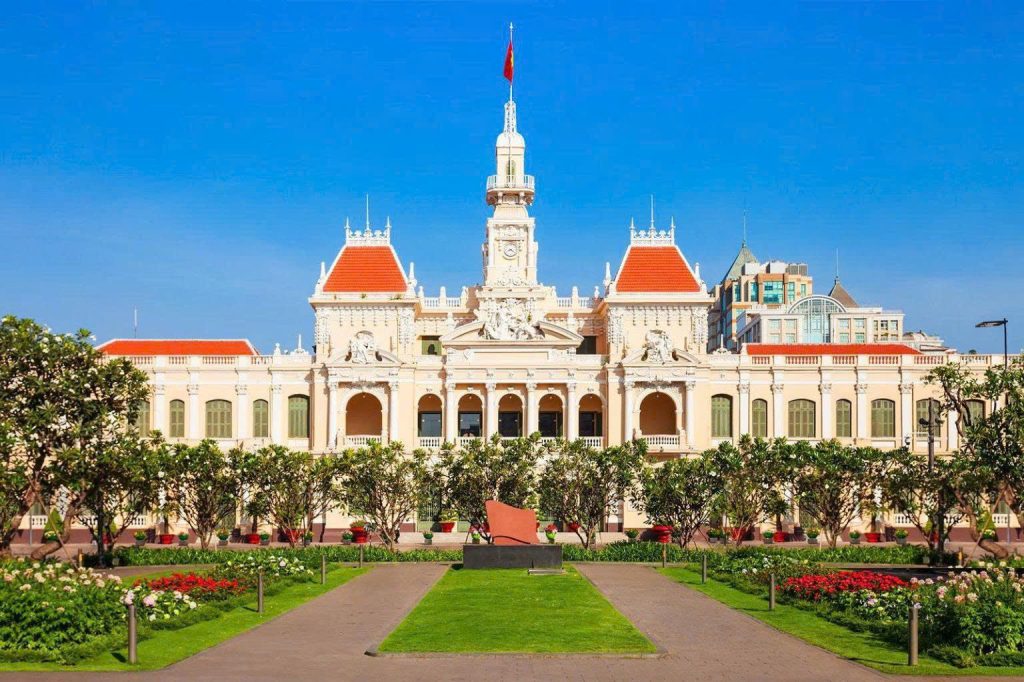
- Saigon Opera House (Nhà hát Lớn): A prime example of belle époque architecture, this venue was beautifully renovated to its original 1897 glory. It serves as a modern performance space, often hosting high-quality cultural entities like the A O Show, a must-see blend of acrobatics, contemporary dance, and Vietnamese heritage narrative.
- City Hall (Ủy ban Nhân dân Thành phố): This ornate French colonial building dominates the top of Nguyễn Huệ Pedestrian Street. While public access to the interior is generally restricted, its elegant, brightly-lit facade and the surrounding beautifully maintained gardens make it a primary point of interest. It stands as a visual anchor to the city’s political and administrative life.
Cu Chi Tunnels (Địa đạo Củ Chi)
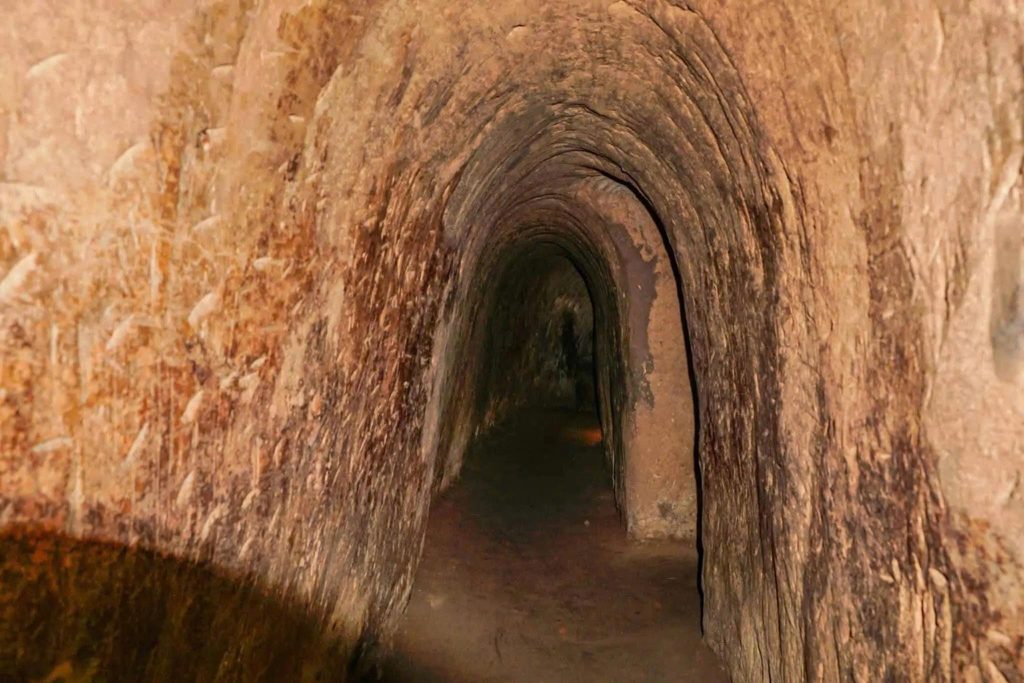
- This is an extraordinary testament to Vietnamese ingenuity and resilience during the war. It represents a vast, underground network used by the Viet Cong soldiers as a base of operations. This sprawling system of narrow, hand-dug tunnels served as living quarters, hospitals, storage facilities, and communication routes, allowing soldiers to control a large rural area near Saigon. It was crucial in launching the 1968 Tết Offensive.
- Visitors can directly explore reconstructed sections of the tight tunnel system and learn about the harsh, secretive life soldiers endured underground for years. The site also displays various ingenious booby traps and remnants of American tanks, offering a vivid, tangible look at the brutal guerilla warfare tactics employed. The sheer scale and complexity of the tunnels showcase the intense dedication to the fight for independence.
RELATED: Ultimate Guide to the Cu Chi Tunnels: History, Experience, and Tips
The Cultural Dynamics of Saigon’s Street Life
Understanding Saigon is understanding its energy—a chaotic, synchronized ballet best observed in its modern, lived-in entities.
Café Apartment (42 Nguyễn Huệ)
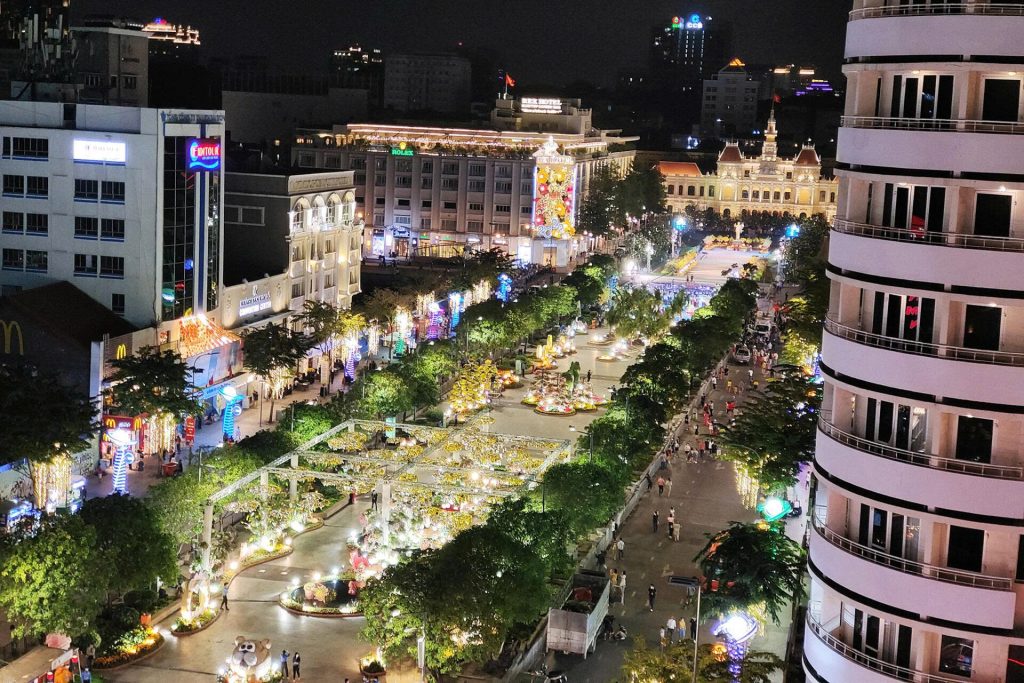
- This visually fascinating entity is an old residential apartment block that has been entirely repurposed. Each unit hosts a unique, independent boutique, coffee shop, art studio, or co-working space, stacked vertically across nine floors.
- Cultural Significance: The Café Apartment is a testament to Saigon’s inventive entrepreneurial spirit and its youth culture. It symbolizes the city’s ability to repurpose the old into something functionally modern and aesthetically chaotic. Navigating the stairs and balconies provides an authentic, slightly voyeuristic glimpse into modern urban life.
The Motorbike Flow and Crossing
- The Sheer Volume: The relentless, sheer volume of motorbikes is perhaps the city’s most defining cultural spectacle. Their synchronized chaos is, in fact, highly organized, reflecting a unique local logic.
- Learn the Art of Crossing the Road: This is a vital life skill for the Ho Chi Minh City Essentials Guide. The golden rule is: maintain a slow, steady, and predictable pace. Do not stop abruptly or run. The drivers are experts at anticipating and flowing around a consistent obstacle. Hesitation is the biggest hazard, as it disrupts the flow and creates uncertainty for the drivers.
- A Lived-In Environment: The motorbikes are not just transportation; they are moving storage units, mobile dining stalls, and the primary vehicle of commerce, showcasing the resourcefulness of the Saigonese people.
RELATED: Top 15 Things to Do in Ho Chi Minh City: Ultimate Saigon Vibe
3. Food Essentials: Dissecting the Culinary Kaleidoscope
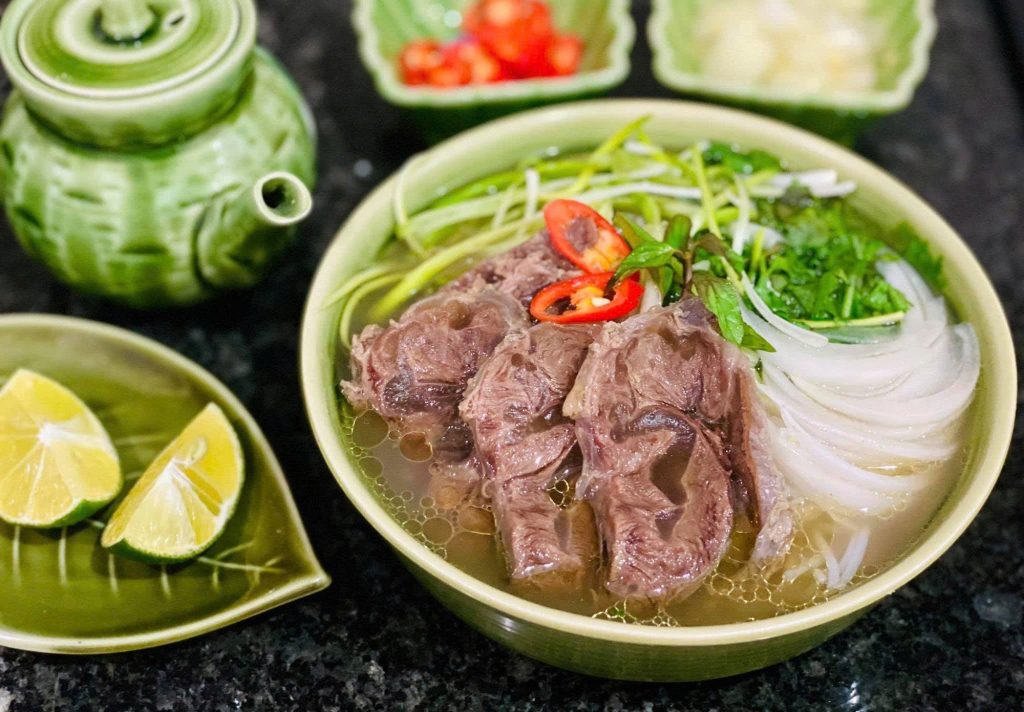
No Ho Chi Minh City Essentials Guide is complete without dedicating significant, mouth-watering detail to its cuisine—the ultimate, most immediate experience-based aspect of the city. Saigon’s food icons are distinct and defined by a signature Southern Vietnamese flavor profile: bold, highly herbaceous, sweeter than its Northern counterparts, and richly layered with fresh ingredients. This section serves as your definitive guide to navigating this world-class street food paradise.
The Southern Vietnamese Staples: Noodle and Rice Supremacy
Southern cuisine elevates comfort food to an art form, focusing on customizable flavors and fresh complexity.
Phở and Hủ Tiếu: Noodle Mastery
- Phở Sài Gòn: Customization is Key. The Southern rendition of Phở is significantly different from Hanoi’s cleaner, simpler broth. Saigon’s version is richer, often sweeter, and frequently uses more complex spices. Crucially, it comes with a vast, separate plate of fresh garnishes (including bean sprouts, lime, chili sauce, slices of chili, and essential herbs like basil and saw-toothed coriander) allowing the diner to adjust the broth’s balance to their exact preference—a critical element of Southern dining culture.
- Hủ Tiếu Nam Vang: The Multilingual Noodle. A true HCMC staple, Hủ Tiếu Nam Vang is a perfect embodiment of the city’s melting pot status, blending Vietnamese, Chinese, and Cambodian flavors. This versatile noodle soup can be served dry (khô)—where the sauce and toppings are mixed with the noodles and the broth is served in a separate bowl—or with the broth poured directly over the noodles. Key protein entities include pork bone broth, shrimp, slices of pork, quail egg, and sometimes rich slices of liver.
Bánh Mì and Cơm Tấm: The Street Food Icons
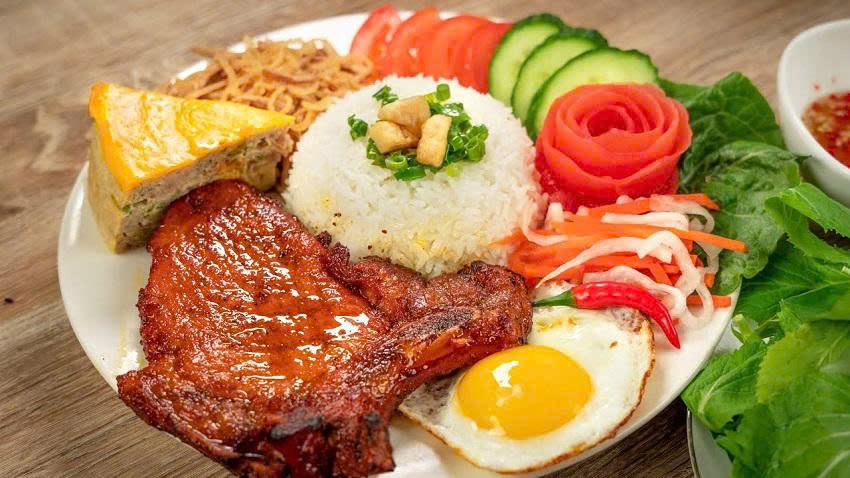
- Bánh Mì Sài Gòn: The Perfect Fusion. This is the undisputed champion of the Vietnamese culinary scene—a perfect marriage of French colonialism (the airy baguette) and Vietnamese ingenuity (the fillings). The benchmark Bánh Mì Sài Gòn focuses on a shatteringly crispy exterior and a soft, cottony interior.
- Focus Entities (The Essential Fillings): The best versions layer flavor: rich pâté, various types of chả lụa (cold cuts), house-made mayonnaise, and the sharp, fresh contrast of pickled carrots/daikon and cilantro. Bánh Mì Huỳnh Hoa (District 1) is often cited as the gold standard, drawing perpetual crowds.
- Cơm Tấm (Broken Rice): The Saigon Power Lunch. A dish historically made from fractured rice grains (a cheaper commodity), Cơm Tấm has evolved into a beloved staple. The star is the exquisitely caramelized grilled pork chop (sườn), often served alongside an egg meatloaf (chả trứng) and shredded pork skin (bì). The entire plate is meant to be finished with a generous drizzle of the rich, sweet, tangy fish sauce dressing (nước chấm).
Dissecting Saigon’s Snacks, Sweets, and Street Gems
Saigon’s food entities extend far beyond its staples, offering a universe of rich snacks and desserts.
Savory Specialties: Bánh Xèo and Gỏi Cuốn
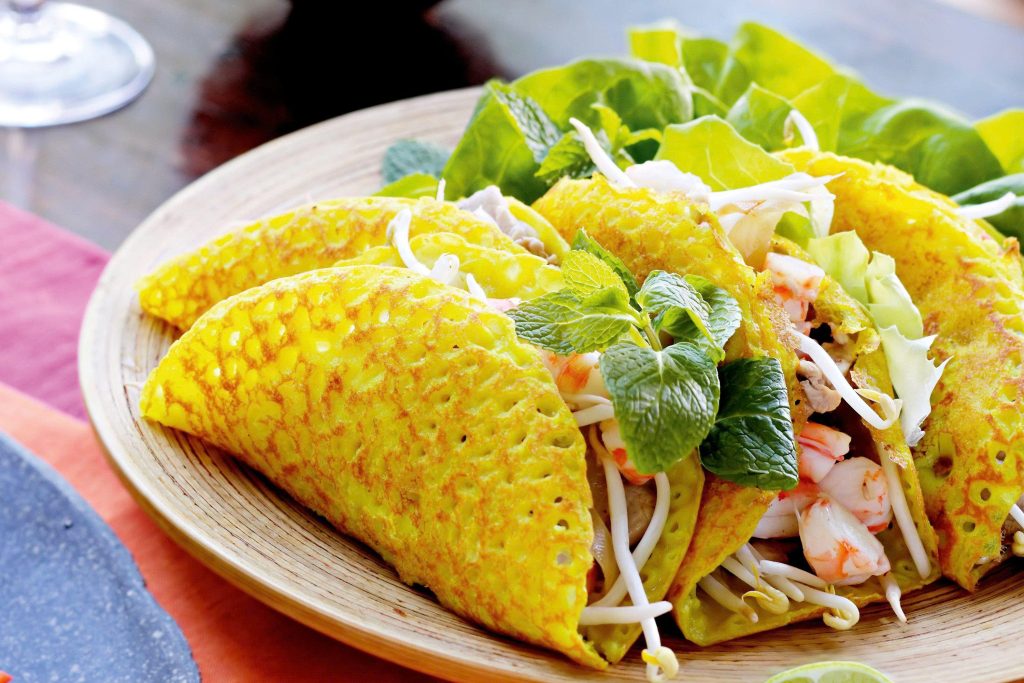
- Bánh Xèo (Sizzling Pancake): A huge, crispy, turmeric-stained savory crepe filled with shrimp, pork, and bean sprouts. The essence of eating Bánh Xèo is the ritual: tear off a piece, place it on a large lettuce leaf, add fresh herbs (mint, basil), wrap it up like a spring roll, and dip it in the nước chấm. A perfect Bánh Xèo should be crispy enough to fracture audibly when you fold it.
- Gỏi Cuốn (Fresh Spring Rolls): A lighter, healthier street alternative. These translucent rolls are packed with fresh entities: vermicelli noodles, mint, lettuce, shrimp, and sometimes pork belly. They are traditionally served with a thick, peanut-hoisin dipping sauce, providing a satisfying textural contrast.
Chè and Sweet Indulgences
- Chè (Vietnamese Dessert Soups): This is a vast, diverse category of sweet soups and puddings, often featuring coconut milk as the base. Chè showcases Vietnamese ingenuity with sweet beans (mung, kidney), various jellies, taro, corn, and fruits.
- Regional Favorites: Chè Thái (a fruit and jelly dessert with coconut cream) and Chè chuối (warm banana and tapioca in coconut milk) are quintessential Southern sweets. Look for stalls that specialize in Chè to find the greatest variety and freshest ingredients.
The Essential Coffee Culture and Social Icons
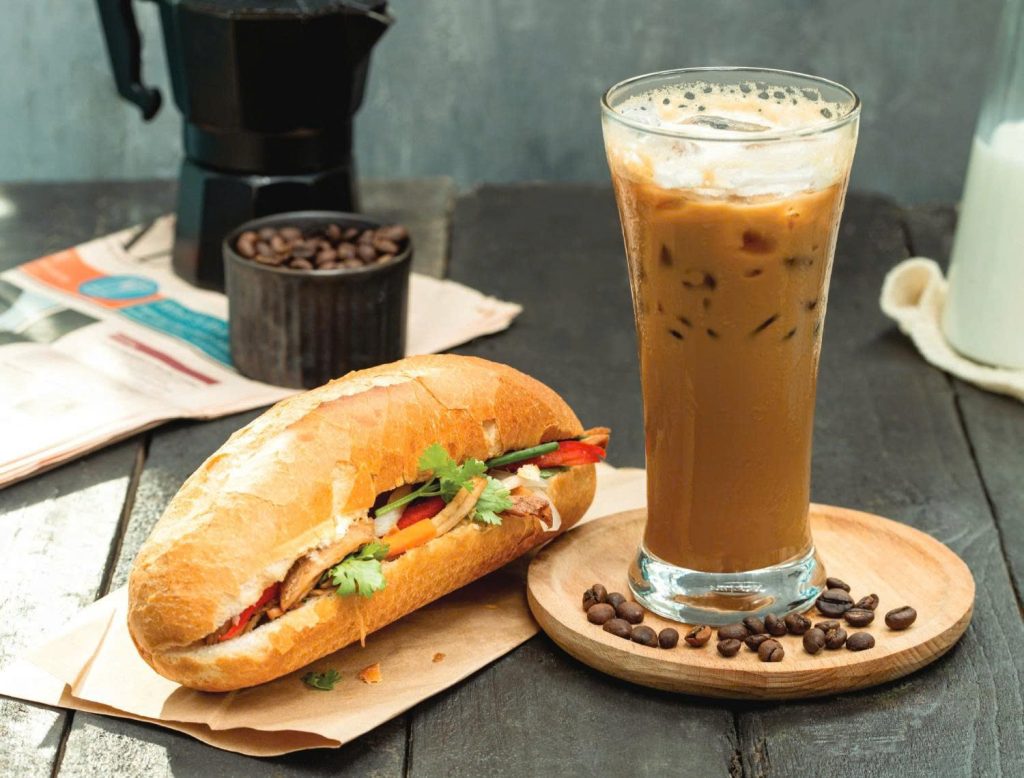
Saigon’s pace is dictated by its robust caffeine habit and its unique street social entities.
Cà Phê: The Fuel of the City
- Cà Phê Sữa Đá (Iced Milk Coffee): The city runs on this potent brew. The dense, robust flavor of locally sourced Robusta beans, dripped slowly through a metal filter (phin), mixes with thick condensed milk and is poured over ice. Its strength and sweetness make it the essential anti-fatigue agent.
- Cà Phê Trứng (Egg Coffee): While originating in Hanoi, high-quality versions have become popular in HCMC’s burgeoning café scene. It offers a decadent, custard-like creamy topping (made from whisked egg yolk and sugar) over the strong black coffee, transforming the drink into a luxurious dessert.
Nhậu Culture: Street Drinking and Communal Snacking
- Nhậu as a Social Entity: Nhậu Culture is an essential cultural activity that signifies unwinding and communal gathering. It is not just about drinking; it is about sharing food and conversation.
- The Ritual: It involves sitting low on plastic stools on the sidewalk, sharing extremely cheap Bia Hơi (fresh beer) or local brands like 333 or Saigon Lager, and consuming a variety of communal snacks (mồi nhậu), such as grilled meats, roasted peanuts, or the famous ốc (shellfish). This scene provides a rich, unscripted glimpse into local evening life.
RELATED: Top 12 Must Try Foods in Ho Chi Minh City (Saigon)
4. Nightlife: The Electric Pulse After Sunset
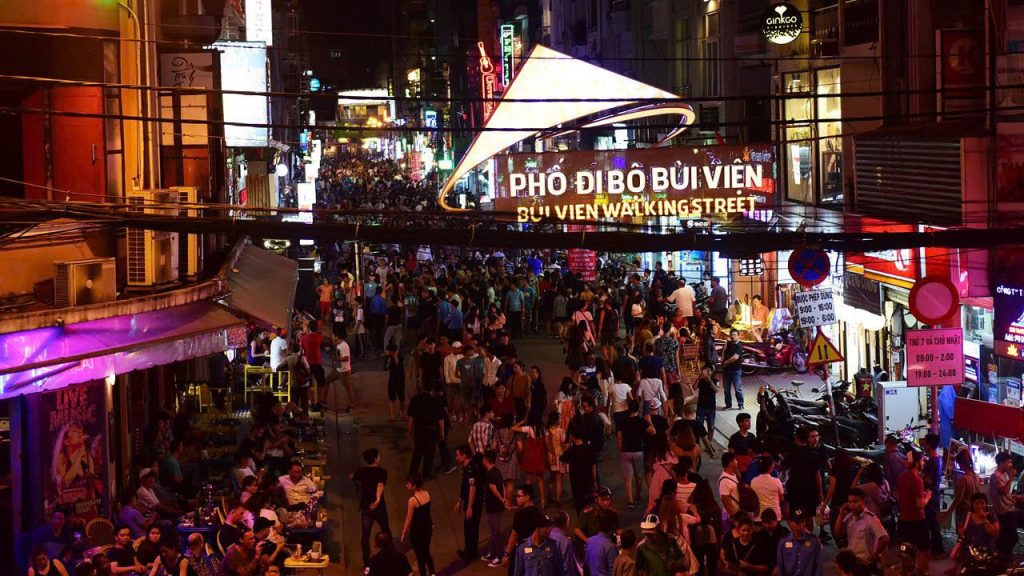
The final component of the Ho Chi Minh City Essentials Guide covers its diverse after-dark offerings, catering to every budget and mood.
The Raucous Heart: Bui Vien and District 1
- The Scene: The epicenter of HCMC’s budget nightlife, characterized by loud EDM music, cheap beer deals, and crowded streets. It’s where travelers connect and party late into the night.
- Safety Context: While fun, it is the number one location for petty crime (snatch-and-grab). Travelers must exercise extreme vigilance.
Night Markets and Street Dining
- Ben Thanh Night Market: When the main market closes, the surrounding streets transform into a night market focused heavily on food and souvenirs. This is where the city’s late-night eating culture truly shines.
Sky-High Sophistication: Saigon’s World-Class Rooftop Scene
For elevated views and a welcome escape from the relentless street noise, Ho Chi Minh City’s rooftop bar scene is absolutely world-class. These venues offer sophisticated service, premium drinks, and a chance to see the sprawling metropolis from a breathtaking, tranquil vantage point, solidifying the city’s cosmopolitan status.
Iconic Heights: Bitexco, Landmark 81, and Beyond
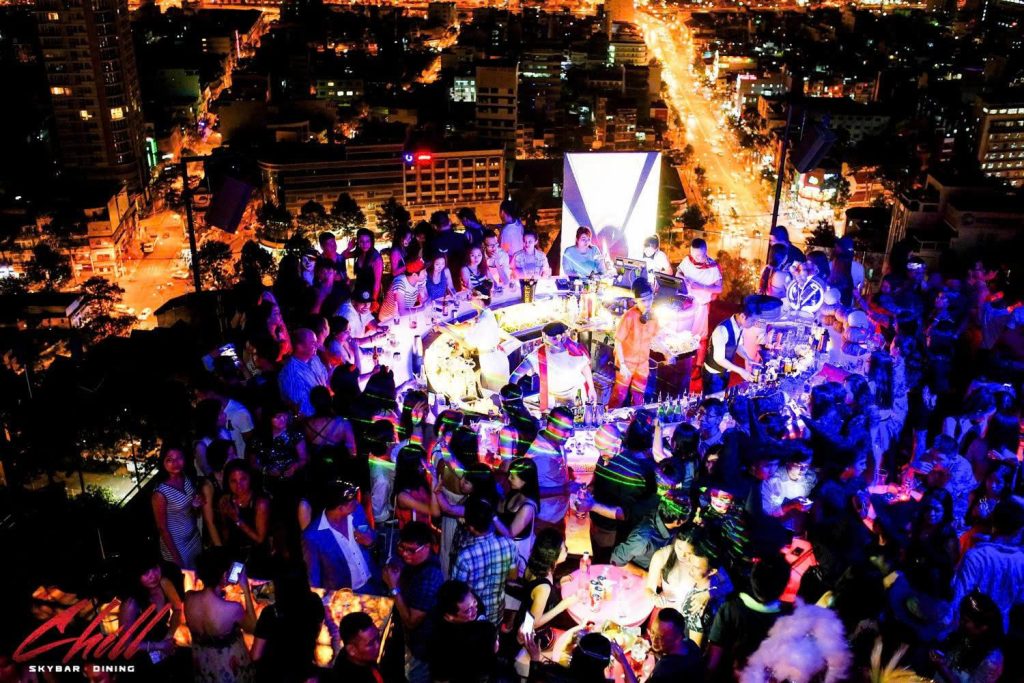
- EON Heli Bar (Bitexco Financial Tower):
- The Experience: Located on the 52nd floor, this bar is known for its unparalleled 360-degree panoramic view of the central districts and the winding Saigon River. It is situated right above the famous Saigon Skydeck.
- Vibe: Sophisticated and upscale. It focuses on premium cocktails and a chic atmosphere, making it ideal for a refined date night or business gathering.
- Icon 56 / A-Oen Bar (Landmark 81):
- The Experience: As Vietnam’s tallest building, Landmark 81 offers the highest-altitude bar experience in the city. The bar space provides a dramatic, top-of-the-world view, emphasizing the sheer scale of HCMC’s development, particularly over the Thu Thiem area.
- Vibe: Modern, cutting-edge luxury. The drinks and service match the spectacular height, making it an essential stop for travelers looking to witness the city’s stunning modern skyline from its apex.
- The Glow Skybar / Chill Skybar:
- The Experience: These sister venues are consistently popular for their vibrant atmosphere, stunning cityscape views, and energetic DJ sets. They are major social entities known for drawing a young, well-heeled crowd.
- Logistics: Due to their popularity and upscale service, a “smart casual” dress code is strictly enforced (no shorts, sandals, or tank tops for men). Reservations are often recommended, especially on weekend nights.
Heritage Bars: Historic Vistas and Old-World Charm
 Sunset in Ho Chi Minh City as seen from Saigon Saigon bar.
Sunset in Ho Chi Minh City as seen from Saigon Saigon bar.
- Saigon Saigon Rooftop Bar (Caravelle Hotel):
- The Experience: This is a truly historic entity, famous for its role during the war as a favored meeting spot and unofficial press headquarters for foreign journalists and correspondents. It sits on the 10th floor, offering a lower, more intimate view than the skyscrapers.
- Vibe: Classic, jazz-era refinement. The bar retains a rich, nostalgic atmosphere, making it perfect for enjoying a quiet cocktail while reflecting on the city’s past, often accompanied by excellent live music.
- Tip: Try their classic cocktails; they carry a certain weight of history.
- Broma Not a Bar (Central District 1):
- Vibe and Location: Located directly on the popular Nguyen Hue Walking Street, Broma offers a fantastic, low-altitude balcony view of the lively pedestrian street and a unique perspective of the illuminated city below. It stands as a popular alternative to the high-end, exclusive skybars.
- The Experience: Unlike the strict dress codes of the high-rise venues, Broma cultivates a bohemian, hip, and highly social atmosphere. It is known for its wide selection of drinks, including local craft beers, and regularly hosts live music, DJ sets, and theme nights.
- Significance: It serves as a perfect mid-range social entity, capturing the modern, relaxed nightlife of Saigon without the hefty price tag of a traditional rooftop. It’s an ideal spot for people-watching and soaking up the street energy from above.
RELATED: Ho Chi Minh City Nightlife Guide: Bars, Bites, and Beyond
5. Practical Travel & Safety Essentials
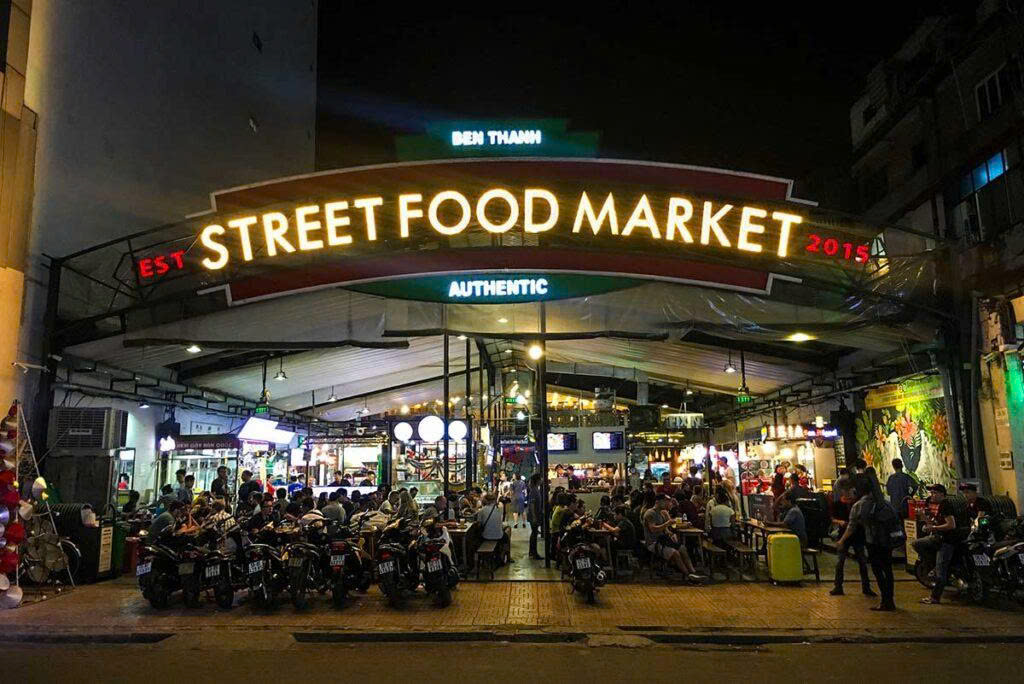
A true Ho Chi Minh City Essentials Guide provides practical, expert advice to ensure a smooth and safe trip.
Getting Around
- Recommendation: Grab or Xanh SM is the dominant and most recommended form of transport. It removes language barriers, provides fixed pricing, and allows easy tracking. Use the motorbike option (GrabBike, Xanh SM bike) for navigating traffic quickly and cheaply.
- Taxis: Only use reliable, recognized entities like Vinasun (white cars with green/red branding) or Mai Linh (green cars). Avoid unmarked or aggressive taxis, especially at the airport.
Crossing the Road
- The secret is not to run or stop abruptly. Maintain a slow, predictable walking pace across the flow of traffic. The motorbikes will automatically adjust and navigate around you. Hesitation is the biggest hazard.
Money, Budgeting, and Scams
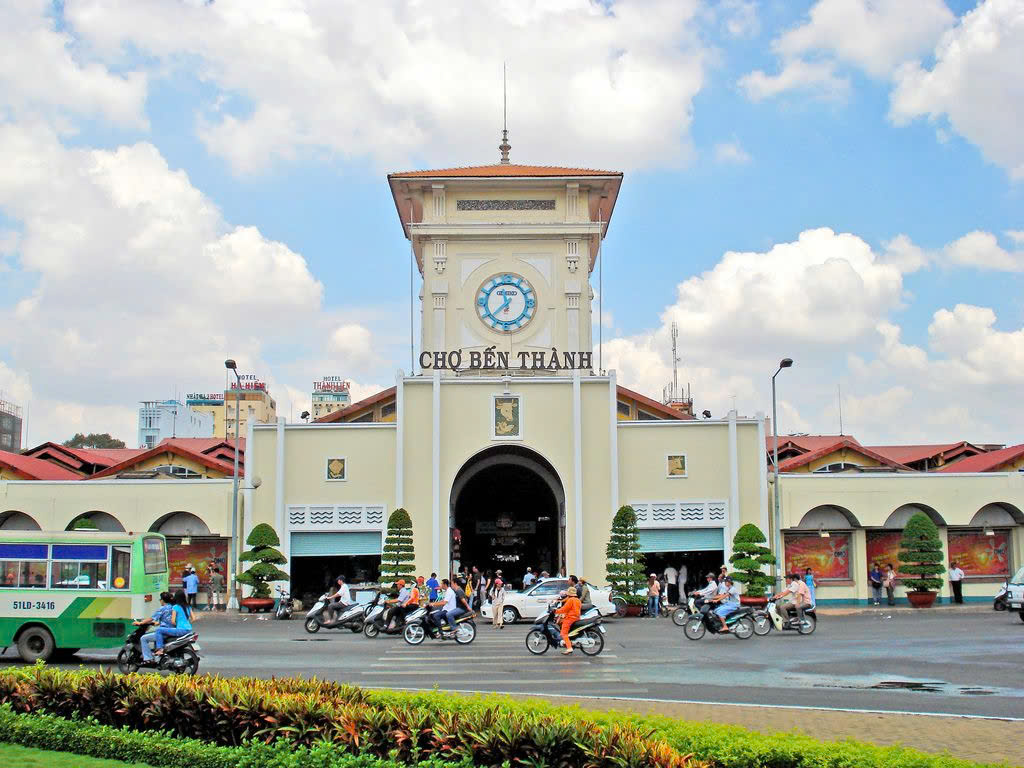
- Currency: The Vietnamese Đồng (VND). Get comfortable dealing with multiple zeroes. Always check bills carefully when paying street vendors, as 100,000 VND and 10,000 VND bills can sometimes be confused due to similar coloring.
- Bargaining: Expect to bargain at markets (Ben Thanh, Binh Tay). Start at 50% of the asking price and aim to settle at 60-70%. Bargaining is considered rude in established restaurants or malls.
- Common Scams: Be aware of overly friendly motorbike drivers or shoe shiners on the street. Politely but firmly decline services you don’t need.
RELATED: Shopping in Ho Chi Minh City: Markets, Malls & Souvenirs
Accommodation Planning
- District 1 (D1): Best for first-timers and short stays. Focus on areas near the Opera House for luxury, or the streets surrounding Ben Thanh for mid-range and backpacker zones.
- D3/D4/D7 (Phú Mỹ Hưng): Ideal for longer stays or for travelers who prioritize quiet, local life, and are comfortable using Grab for all transit.
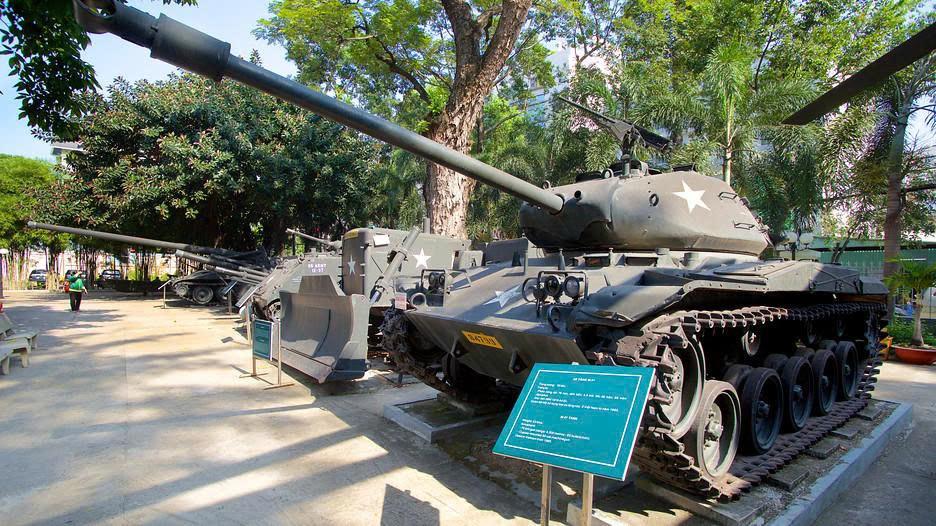
War Remnants Museum in Ho Chi Minh City.
6. Frequently Asked Questions (FAQs) – Ho Chi Minh City
Culture and History
- Is it better to call the city Saigon or Ho Chi Minh City (HCMC)? While HCMC is the official administrative name, most locals use Saigon in casual conversation, and using it is widely accepted and often appreciated.
- What is the single most important historical site to visit? The War Remnants Museum is arguably the most crucial site for understanding modern Vietnam’s history and its impact on the nation.
- How should I approach visiting the Cu Chi Tunnels? Allocate enough time and be prepared for a vivid, tangible look at wartime ingenuity. Go early to avoid the mid-day heat and large tour groups.
Food and Drink Essentials
- What is the main difference between Northern and Southern Phở? Phở Sài Gòn (Southern) typically has a richer, sweeter broth and is served with a much larger plate of fresh herbs and garnishes for customization.
- What is the ultimate Saigon street food icon to try? The Bánh Mì Sài Gòn is the undisputed champion, known for its shatteringly crispy exterior and complex layers of pâté and cold cuts.
- How should I drink Vietnamese iced coffee (Cà Phê Sữa Đá)? It’s a potent mix of strong Robusta beans dripped over condensed milk and ice. Drink it slowly and enjoy its energy-boosting sweetness.
Nightlife and Practical Safety
- Where is the main budget nightlife area, and what is the safety concern? Bui Vien Walking Street is the raucous center. The main safety concern there is petty theft/snatch-and-grab, so exercise extreme vigilance.
- Which is better for a high-end view: Bitexco or Landmark 81? Landmark 81 offers the highest altitude view, while the EON Heli Bar at Bitexco provides a classic, central 360-degree panorama.
- What is the secret to crossing the road in HCMC? The golden rule is to maintain a slow, steady, and predictable pace. Do not stop or run; the motorbikes will flow around you.
RELATED: Hanoi Travel Guide: Discover Vietnam’s Ancient Heart
Ho Chi Minh City is a place that demands engagement, rewarding those who embrace its energy with unforgettable experiences. From the solemn halls of the War Remnants Museum to the vibrant sizzle of a roadside Bánh Xèo, and the panoramic glitz of a rooftop bar, the city is a living story. By utilizing this comprehensive Ho Chi Minh City Essentials Guide, you are not just a tourist; you are a culturally aware traveler ready to navigate the complexities and joys of modern Saigon. Go forth, explore the entities, savor the food, and soak in the electric atmosphere of the city that never sleeps.

